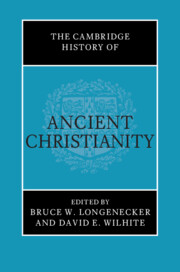Book contents
- The Cambridge History of Ancient Christianity
- The Cambridge History of Ancient Christianity
- Copyright page
- Contents
- Figures
- List of Contributors
- Editors’ Preface
- Part I Contested Contexts
- Part II Contested Figures
- Part III Contested Heritage
- Part IV Contested Cultures
- 14 Early Christians and Their Socioeconomic Contexts
- 15 Early Christians and Roman Imperial Ideology
- 16 Martyrdom between Fiction and Memory
- 17 The Emergence(s) of Christian Material Culture(s)
- 18 Manuscripts and the Making of the New Testament
- Part V Contested Beliefs
- Part VI Contested Bodies
- Ancient Sources
- Modern Authors
- References
16 - Martyrdom between Fiction and Memory
from Part IV - Contested Cultures
Published online by Cambridge University Press: 23 August 2023
- The Cambridge History of Ancient Christianity
- The Cambridge History of Ancient Christianity
- Copyright page
- Contents
- Figures
- List of Contributors
- Editors’ Preface
- Part I Contested Contexts
- Part II Contested Figures
- Part III Contested Heritage
- Part IV Contested Cultures
- 14 Early Christians and Their Socioeconomic Contexts
- 15 Early Christians and Roman Imperial Ideology
- 16 Martyrdom between Fiction and Memory
- 17 The Emergence(s) of Christian Material Culture(s)
- 18 Manuscripts and the Making of the New Testament
- Part V Contested Beliefs
- Part VI Contested Bodies
- Ancient Sources
- Modern Authors
- References
Summary
The stories of the martyrs occupied a place in early Christian thought and practice that at times rivaled scripture itself. Christians honored figures such as Paul and Peter as apostles of the gospel message, but their reputations and influence were magnified by the accounts of their gruesome deaths. They had stood up for the faith at the cost of their own lives, and in doing so they sealed their places in the celestial hierarchy.
- Type
- Chapter
- Information
- The Cambridge History of Ancient Christianity , pp. 372 - 395Publisher: Cambridge University PressPrint publication year: 2023



